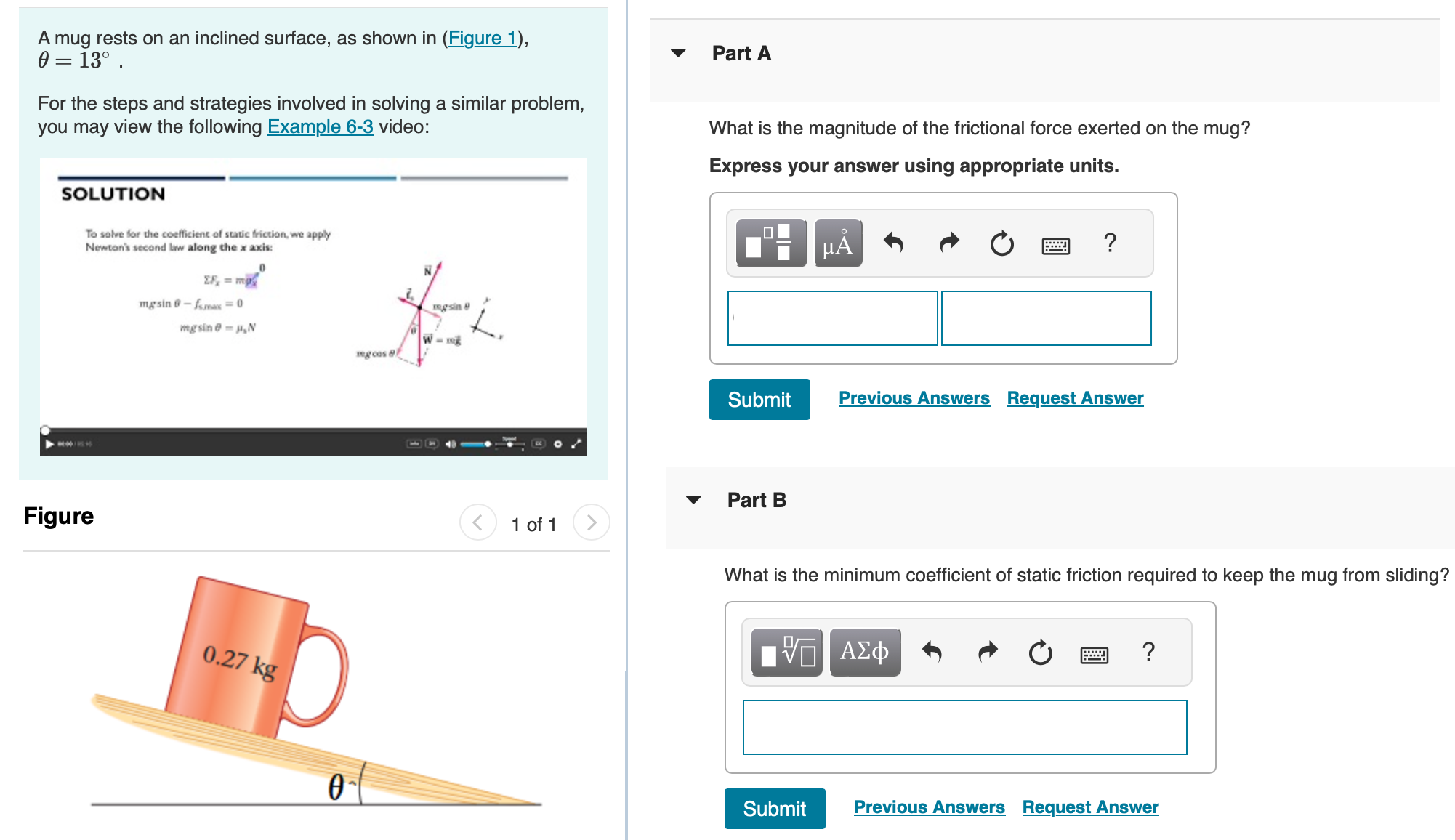A mug rests on an inclined surface, as shown in (Figure 1), θ = 13∘. For the steps and strategies involved in solving a similar problem, you may view the following Example 6-3 video: Part A What is the magnitude of the frictional force exerted on the mug? Express your answer using appropriate units. Part B What is the minimum coefficient of static friction required to keep the mug from sliding? Submit Previous Answers Request Answer
